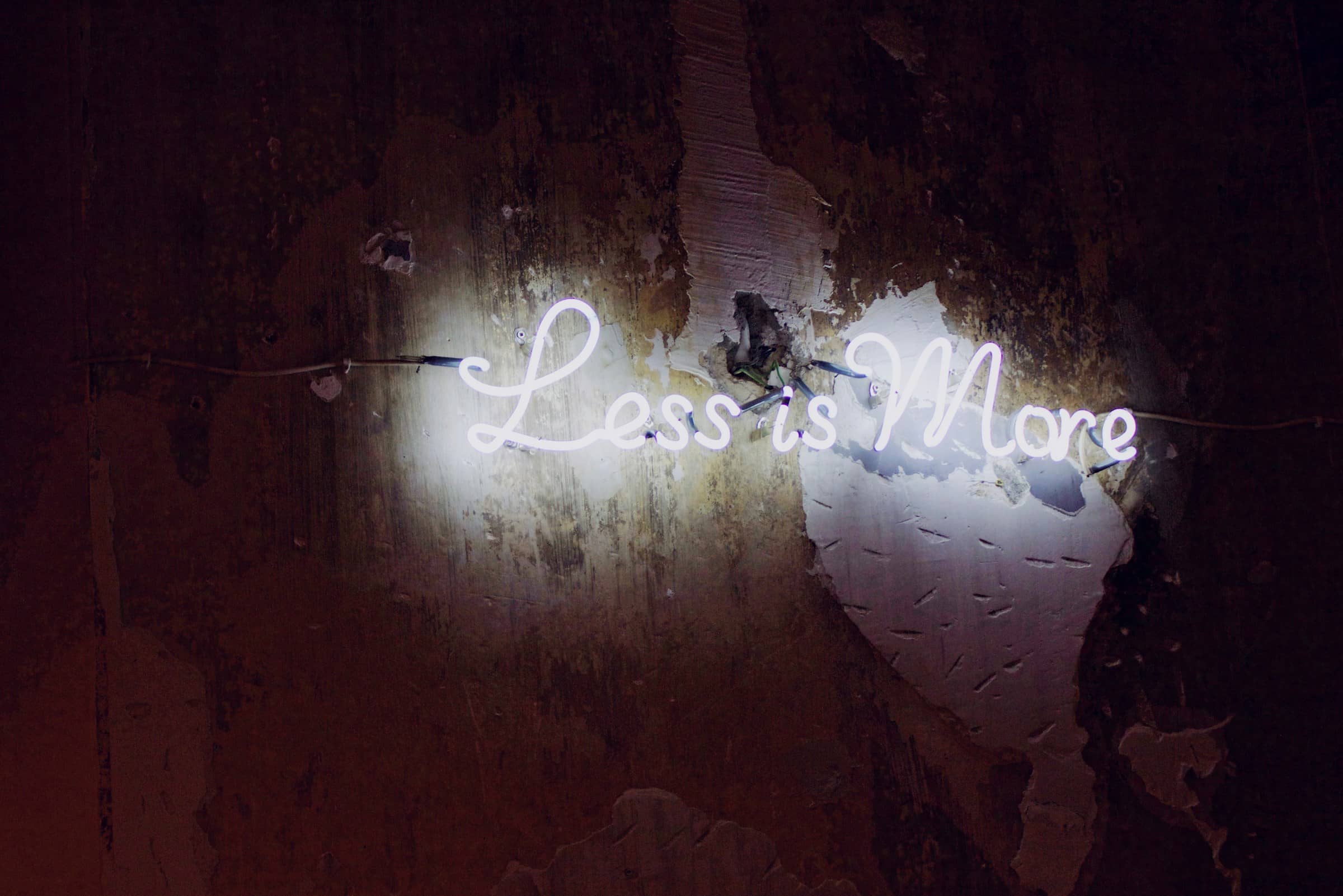How to Let Go of the Idea That More is Better
We live in a world that often tells us that more is always better—more possessions, more money, more activities, more food. This idea of “more” has become deeply ingrained, with many of us believing that accumulating or consuming more...


We live in a world that often tells us that more is always better—more possessions, more money, more activities, more food. This idea of “more” has become deeply ingrained, with many of us believing that accumulating or consuming more will somehow lead to a happier, more fulfilling life.
But when we pause to question it, we might find that the pursuit of more doesn’t always bring the joy and satisfaction we expect. In fact, it can often lead to overwhelm, stress, and a feeling of never having enough.
Letting go of the “more is better” mindset isn’t always easy, especially when we’re surrounded by messages that reinforce it daily. But by taking thoughtful, intentional steps, we can shift our focus toward a life of contentment and simplicity.
Here are some practical solutions to help you let go of the idea that more is better.
1. Decipher Who Is Telling You That Message
Take a moment to examine where the message of “more is better” is coming from. Is it from advertisements, social media, friends, or even family? Recognizing the sources can help you become more mindful of the influences around you and give you the power to question whether those messages align with your own values. Once you’re aware, it’s easier to filter out the noise and choose your own path to fulfillment.
2. Question Who Benefits from Your Spending
Whenever you feel the urge to buy something new, ask yourself who stands to gain from your purchase. Are you buying because it will genuinely add value to your life, or because a brand or influencer has convinced you that it will? Often, companies and advertisers benefit from the “more is better” mentality, while we end up with excess items we don’t need. This simple question can serve as a powerful reminder to prioritize your own well-being over someone else’s profit.
3. Evaluate the Influence on Your Health
Consider the impact that the pursuit of more has on your mental, physical, and emotional health. Does striving for more money, more possessions, or more activities leave you feeling anxious, tired, or depleted? Take stock of how your current lifestyle affects your overall well-being. If the effects are more negative than positive, it may be time to reassess your priorities and make adjustments that foster a healthier balance.
4. Test Out Less and See If It’s an Improvement
Sometimes, the best way to let go of “more” is to simply try out “less.” Experiment with a minimalist approach for a few weeks—reduce your spending, limit your activities, or simplify your meals—and observe the impact it has on your life. You may discover that having less brings a sense of calm, clarity, and freedom that the pursuit of more could never achieve.
5. Study the Examples of People You Admire
Look to the lives of people you admire who have chosen simplicity over excess. Whether they are friends, family, or public figures, studying how they live can offer valuable insights into the benefits of having less. Ask yourself what they might gain from a simpler approach to life and consider how you could apply similar principles to your own journey.
6. Spend Time Alone
Spending time alone can help you reconnect with what truly matters. When we’re alone, we’re less likely to be influenced by the desires and expectations of others. Use this time for self-reflection—take a walk in nature, meditate, or journal about your values and goals. Being alone with your thoughts allows you to tune into your inner desires, helping you see that you don’t need more to feel whole or happy.
7. List Out the Benefits You’d Experience with Less
Take some time to sit down and create a personal list of the benefits you might experience by embracing less. This exercise allows you to reflect on specific areas of your life where “more” may not be serving you and helps you visualize the positive outcomes of simplifying. Consider aspects like reduced stress, increased savings, more time for relationships, or improved health.
By identifying and writing down these potential benefits, you make the abstract idea of “less is more” tangible and relevant to your own life. This list can serve as a motivating reminder of why you’re choosing to let go of excess and focus on what truly matters.
8. Practice Gratitude Daily
Gratitude is a powerful tool for cultivating contentment. Each day, take a few minutes to reflect on what you’re grateful for, whether it’s your health, family, or a beautiful moment. Focusing on gratitude shifts your mindset from wanting more to appreciating what you already have. This habit can help you feel more satisfied and less driven by the pursuit of excess.
9. Set Intentional Goals
Finally, setting intentional goals can help you define what truly matters. Instead of aiming for more money, more possessions, or more status, set goals that align with your values and bring personal fulfillment. Ask yourself what you want to achieve, who you want to become, and what kind of life you want to lead. When your goals are intentional, the desire for “more” fades, replaced by a meaningful pursuit of purpose and contentment.
Letting go of the idea that more is better is a gradual process, but one that can bring greater peace and satisfaction to your life. By questioning societal messages, evaluating the impact of “more” on your well-being, and focusing on experiences and gratitude, you’ll find that contentment doesn’t come from accumulation. It comes from embracing the beauty of what you already have and living in alignment with your true values.

 Hollif
Hollif 























.jpg&h=630&w=1200&q=100&v=f776164e2b&c=1)







